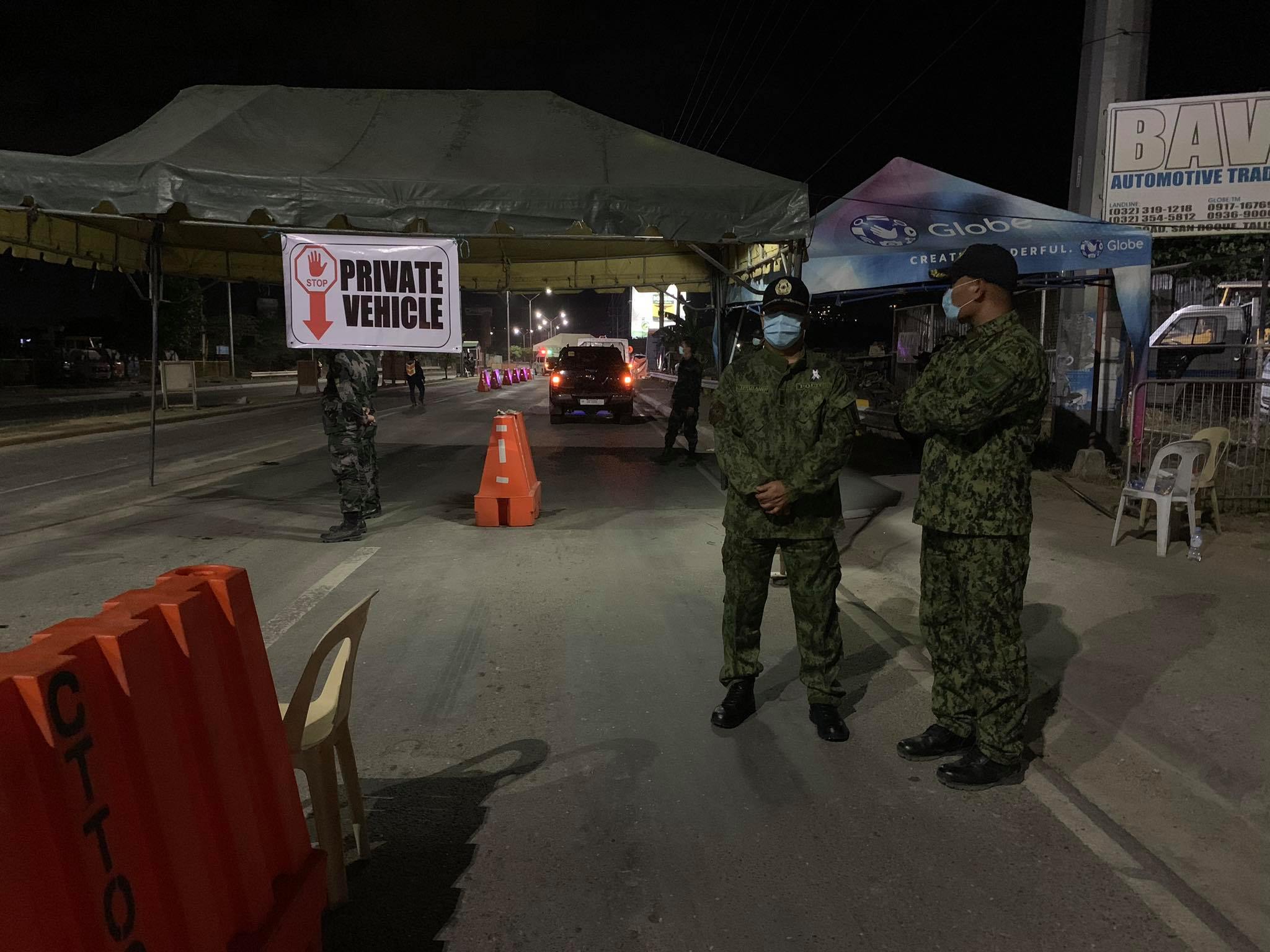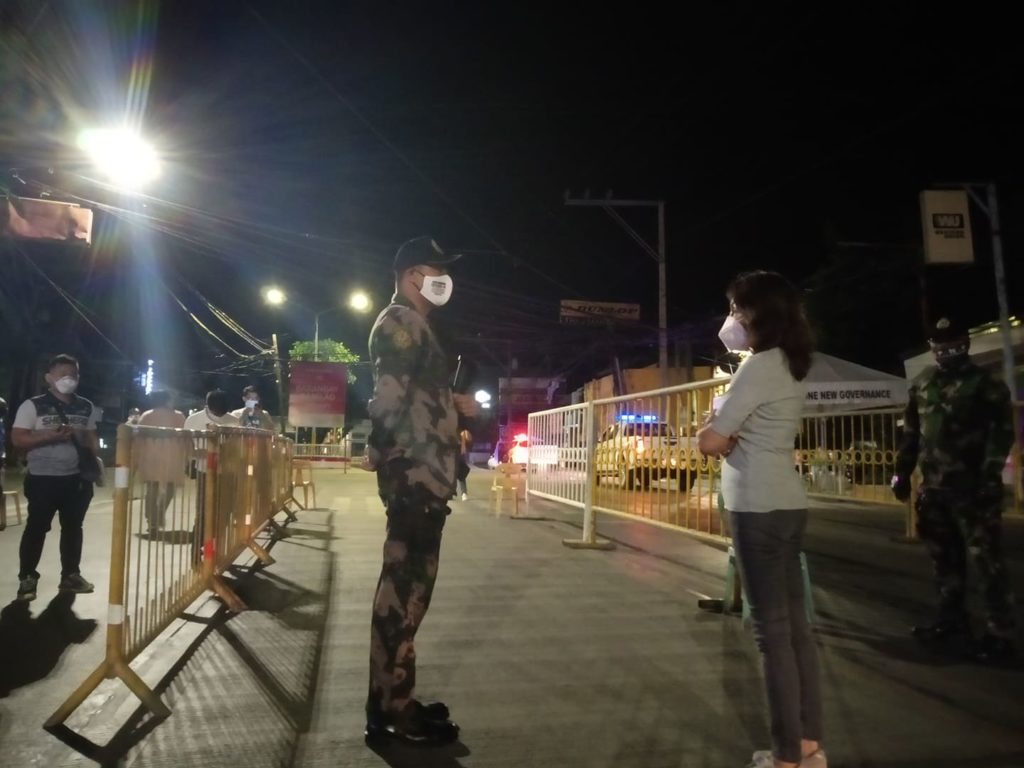
Talisay City policemen man the border checkpoint or the border control point of Talisay City and Cebu City. | file photo
CEBU CITY, Philippines — The effect of the reimposition of the strict border controls between Cebu province and Cebu City may decide on what is up next for areas in the province that have a high number of coronavirus disease 2019 (COVID-19) cases.
Governor Gwendolyn Garcia, on several occasions since the meeting with officials from the national Inter-Agency Task Force (IATF) last Tuesday, June 23, said closing the borders was needed to stop the spread of the virus throughout the province.
Garcia also noted that since the province eased its borders with Cebu City when the latter shifted to a general community quarantine last June 1, the cases in the province started to rise.
Talisay City, which borders the province and the city in the south, for instance, had 54 cases of COVID-19 last May 31. In the past 24 days, the cases in the city has already climbed to over 200.
Garcia said that during the meeting with the IATF officials, who are in Cebu City to oversee the COVID-19 response here, she asked to give the province two weeks to observe how closing the borders again would affect the COVID-19 situation in the province.
“When I said nga mo-impose na ta og border control balik, I asked for the next two weeks to see if there would be an improvement on the numbers,” Garcia said.
“Kung mo-improve, meaning the rate of increase of positive numbers will reduce after two weeks, it would show nga effective ang border controls and hopefully, dili na kinahanglan nga i-impose ang more stringent nga classification not just for Talisay but including Minglanilla and also Consolacion,” she added.
Starting at midnight this Friday, June 26, 2020, Cebu province, for the second time since the COVID-19 crisis started, will implement stringent border controls against Cebu City, the “epicenter” of the contagion here.
READ: Gwen orders strict border control with Cebu City anew
This means that except for those exempted under Section 8 of her Executive Order No. 17 and are granted with travel passes by the Capitol, entry of all persons from Cebu City to the province will no longer be allowed.
READ: FULL EO NO. 17: GCQ PROTOCOLS OF CEBU
Those, who are most affected by the border control measures, are residents of Cebu province, but they are employed in businesses in Cebu City that are supposedly allowed to operate such as the pharmacies, grocery stores, and business process outsourcing companies.
During the announcement of the reimposition of the border controls on Monday, Garcia gave these workers until midnight of Thursday, June 25, to return to their hometowns in the province or get settled in Cebu City and continue.
For those, who will need to transit across Cebu City in traveling from one Cebu province component LGU to another, such as those from Talisay City and going to Mandaue City, Garcia said they would need to apply for a transit vehicle pass which would bear the name of the person traveling, unique control number, vehicle’s plate number, the validity of the pass and the specific point where the travel would be allowed.
Cebu Governor Gwendolyn Garcia shows a sample of the Cargo Vehicle Pass that the Capitol will issue to cargo delivery vehicles as a requirement for them to pass through the province’s border controls with Cebu City. | Rosalie O. Abatayo
Garcia said that those, who have been issued with Skeleton Force pass during the first imposition of the border controls last March, would no longer need to reapply for passes as the old passes would still be accepted in the border checkpoints.
For cargo vehicles, on the other hand, Garcia said the province would still issue cargo vehicle passes in order for the cargo vehicles to transit through Cebu province and Cebu City despite the border controls.
Garcia also clarified that the strict border controls would only cover those coming from Cebu City. This means that essential travel between the other parts of the province and the highly urbanized cities of Mandaue and Lapu-Lapu are still allowed.
The boundaries between Cebu City and Cebu province are defined by Mandaue City and Consolacion in the north, Talisay City in the south, and Balamban town in the west./dbs
